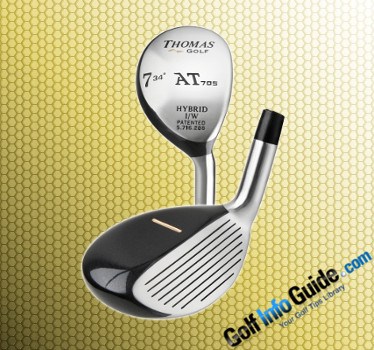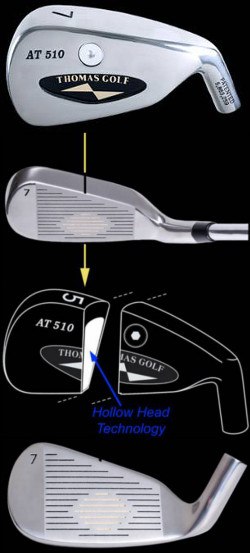Choosing between hybrid woods and hybrid irons depends on your individual preferences, playing style, and specific needs on the golf course. Here's a comparison to help you determine which option might be right for you:
Hybrid Woods:
- Design: Hybrid woods have a larger clubhead and a more rounded shape, similar to fairway woods. They typically feature a shallow face, a lower center of gravity (CG), and a wider sole. This design promotes higher launch angles and increased forgiveness, making them easier to hit for players who struggle with long irons or fairway woods.

- Distance and trajectory: Hybrid woods are designed to generate more distance compared to traditional long irons. The combination of the larger clubhead, low CG, and higher launch angle helps maximize carry distance and overall distance. They often produce a higher ball flight, making them suitable for players who need help getting the ball in the air or who want to hold greens on long approach shots.
- Versatility: Hybrid woods can be used off the tee, in the fairway, or from rough lies. They provide versatility and can replace long irons or fairway woods, giving you options depending on the specific shot requirements.
Hybrid Irons:
- Design: Hybrid irons, also known as iron-replacement hybrids, have a smaller clubhead compared to hybrid woods. They have a more compact shape and a design that closely resembles traditional irons. The face is typically deeper, and the CG is positioned higher to help with a more controlled ball flight.
- Control and accuracy: Hybrid irons offer more precision and control compared to hybrid woods. Their design allows for better shot shaping and maneuverability, making them ideal for players who prioritize accuracy and workability. They provide a consistent trajectory and are well-suited for approach shots and targeting specific landing areas on the green.

- Playability: Hybrid irons are versatile clubs that can be used for a variety of shots, including tee shots, approach shots, and shots from the rough. They are particularly useful for players who struggle with long irons or who prefer a more forgiving and easier-to-hit option.
Ultimately, the choice between hybrid woods and hybrid irons depends on your skill level, playing style, and the specific areas of your game that need improvement. Here are some factors to consider when making your decision:
- Skill level: If you're a beginner or have a higher handicap, hybrid woods might be more forgiving and easier to hit, helping you generate more distance. If you have intermediate or advanced skills and prefer greater shot control and workability, hybrid irons might be a better fit.
- Distance and trajectory: Consider the distance and ball flight you desire. If you're looking for maximum distance and a high launch, hybrid woods are a good option. If you prefer a more controlled trajectory and the ability to shape your shots, hybrid irons might be the better choice.
- Shot versatility: Evaluate the variety of shots you encounter on the course. If you need a club that can handle a range of situations, including tee shots, long approach shots, and shots from the rough, hybrid woods can provide the versatility you need. If you primarily focus on approach shots and targeting specific landing areas, hybrid irons might suit your needs better.
- Personal preference: Ultimately, your personal preference and comfort with a particular club type should also be considered. Test out both hybrid woods and hybrid irons, if possible, to see which one feels more comfortable and inspires confidence in your game.
It's recommended to consult with a golf professional or get fitted for clubs to assess your swing and receive personalized recommendations based on your specific needs. This will help ensure that the hybrid you choose is the right fit for your game and helps you achieve your desired results on the course.







